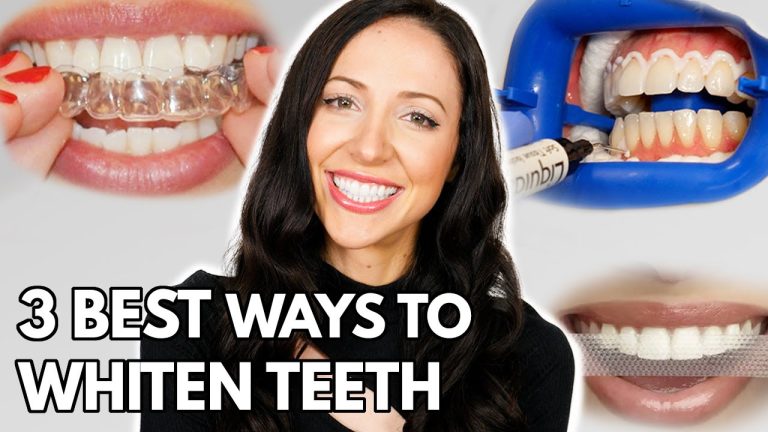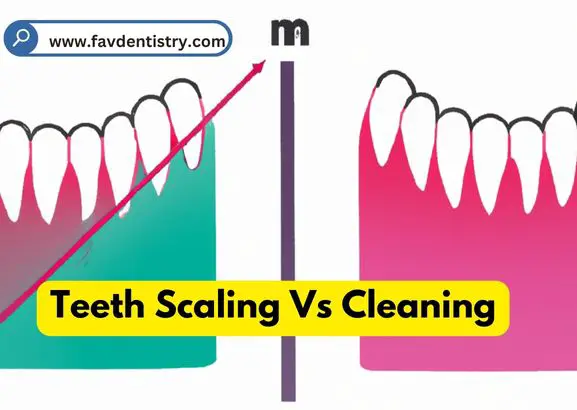Last Updated on 3 weeks by DR. ALBIN SIPES
After teeth whitening, you can eat normally once the recommended waiting period of 24-48 hours has passed. During this time, it is best to avoid consuming foods or drinks that may stain your teeth.
Introducing a bright and dazzling smile to the world with teeth whitening is an exciting venture. However, it’s crucial to understand the importance of post-treatment care to maintain and maximize the results. The burning question that arises in this dental journey is: how long should you wait before returning to your regular eating habits?
To shed light on this, it is advisable to exercise patience and restrain your cravings for a short period. This write-up aims to guide you through the waiting time after teeth whitening and provide practical tips to ensure an effective and long-lasting outcome. So, let’s delve into the details and discover when you can confidently enjoy your meals without any restrictions.
The Importance Of Waiting After Teeth Whitening
Teeth whitening can be an effective way to brighten your smile and boost your confidence. However, it’s important to understand that the journey to a dazzling smile doesn’t end after the whitening procedure. In fact, one of the key aspects of maintaining the results of your teeth whitening treatment is the period of time you wait before returning to your normal eating habits.
This waiting period is crucial for ensuring the lasting effects of your teeth whitening, as well as minimizing the risk of undoing all your efforts. We will delve into the importance of waiting after teeth whitening and how food and drinks can impact your newly whitened teeth.
Why Waiting Is Crucial Post Teeth Whitening
During the teeth whitening process, your teeth become more porous and vulnerable. Waiting after teeth whitening allows the teeth to recover and strengthens the newly bleached enamel. Here are the key points to understand about why waiting is crucial:
- Strengthening the enamel: Waiting after teeth whitening gives the enamel time to regain its strength, minimizing the risk of sensitivity and damage from food and drinks.
- Preventing stains: Consuming certain foods and beverages right after whitening can lead to staining and discoloration. Waiting allows the enamel to harden, making it more resistant to stains.
- Maximizing results: Patience is key when it comes to teeth whitening. By waiting for the recommended period of time, you allow the whitening agents to fully take effect and achieve the desired results.
The Effects Of Food And Drink On Whitened Teeth
It’s crucial to be mindful of the food and drinks you consume after teeth whitening to maintain your dazzling smile. Here’s what you need to know about the effects of food and drinks on whitened teeth:
- Avoid staining agents: Foods and beverages with strong coloring agents such as coffee, tea, red wine, and berries can stain freshly whitened teeth. Limit your consumption of these staining agents to maintain your whitened smile.
- Acidic foods and drinks: Acidic items like citrus fruits, vinegar, and carbonated drinks can temporarily soften the enamel, making it more susceptible to stains and damage. It’s best to avoid these types of items immediately after teeth whitening.
- Temperature sensitivity: During the waiting period, your teeth might be more sensitive to hot and cold foods. It’s advisable to consume lukewarm or room temperature foods and drinks to minimize discomfort.
By understanding the importance of waiting after teeth whitening and being mindful of the impact of food and drinks, you can enjoy the long-lasting results of your whitening treatment. Remember, patience is key in maintaining a bright and beautiful smile.
Assessing The Different Stages Of Healing
Teeth whitening is an increasingly popular cosmetic procedure that can leave you with a bright and dazzling smile. However, it’s important to understand that the process of healing after teeth whitening varies for each individual. There are different stages of healing that you need to be aware of so that you can navigate the post-whitening period with ease.
We’ll explore the various stages of healing after teeth whitening and provide some essential tips for a smooth recovery. So, let’s dive right in and assess the different stages of healing.
The Initial Healing Phase After Teeth Whitening
During the first few hours after teeth whitening, you may experience some discomfort and sensitivity. This is a normal part of the healing process and should subside within a day or two. It’s important to be mindful of what you eat during this initial healing phase to avoid aggravating any sensitivity.
Stick to soft and non-acidic foods that won’t cause further irritation to your teeth or gums.
The Stages Of Sensitivity And Recovery
After the initial healing phase, you may still experience some sensitivity to hot and cold temperatures. This is a temporary side effect of the whitening process and should gradually diminish over time. It’s recommended to avoid extremely hot or cold foods and beverages during this stage to minimize discomfort.
Additionally, you may notice that your teeth appear slightly more porous or prone to staining immediately after whitening. This is normal, and your teeth will gradually regain their natural strength and resilience.
The Importance Of Following The Dentist’S Instructions During Healing
To ensure a successful and smooth healing process, it’s crucial to follow your dentist’s instructions diligently. They may provide you with specific guidelines regarding what to eat and drink during the healing period, as well as any additional care instructions.
Following these instructions will help promote proper healing, reduce sensitivity, and extend the longevity of your teeth whitening results. Remember, each person’s healing process may vary, so it’s important to consult with your dentist to address any concerns or questions you may have.
By understanding the different stages of healing after teeth whitening and adhering to your dentist’s instructions, you can ease any discomfort and enjoy the benefits of a whiter smile. Take the necessary steps to ensure a smooth recovery, and soon enough, you’ll be able to confidently show off your newly whitened teeth.
Factors Influencing The Waiting Time
Teeth whitening procedures have gained immense popularity in recent years, with many individuals seeking that perfect radiant smile. However, after undergoing a teeth whitening treatment, it is important to understand the factors that influence the waiting time before you can resume eating normally.
This article explores three key factors that determine the waiting period, including the type of teeth whitening procedure, the severity of tooth discoloration, and personal habits and lifestyle choices impacting healing time.
Type Of Teeth Whitening Procedure
Different teeth whitening procedures have varying impact and recovery times. Understanding which type you have undergone will help you determine when you can start eating normally. Here are some common teeth whitening procedures and their associated waiting times:
- In-office professional whitening: This procedure involves using a high-concentration bleaching gel and often yields faster results. In most cases, you can resume eating normally immediately after the treatment.
- At-home whitening kits: These typically come with custom trays and a lower concentration of whitening agent. The waiting time may vary, but it is generally advised to wait at least 30 minutes after removing the trays before eating.
Severity Of Tooth Discoloration
The severity of your tooth discoloration plays a crucial role in determining the waiting time after teeth whitening. If your teeth were heavily stained or discolored, the procedure might require multiple sessions or a higher concentration of bleach. In such cases, it is recommended to wait longer before consuming food to allow the teeth to stabilize and avoid any potential sensitivity.
Personal Habits And Lifestyle Choices Impacting Healing Time
Your personal habits and lifestyle choices can significantly impact the healing time after a teeth whitening treatment. Here are some factors to consider:
- Smoking: Smoking can delay the healing process and prolong tooth sensitivity. It is advisable to quit smoking or at least cut down significantly to promote faster recovery.
- Consuming colored foods and beverages: Immediately after teeth whitening, it is best to avoid or limit the intake of foods and beverages that can cause staining, such as coffee, tea, red wine, beets, and dark sauces. These can potentially stain the newly whitened teeth and extend the waiting time.
- Maintaining good oral hygiene: Practicing good oral hygiene, including regular brushing, flossing, and using mouthwash, can help promote healing and prevent any complications.
Understanding the waiting time after teeth whitening is essential to ensure the best results and maintain long-lasting whiteness. By considering the type of teeth whitening procedure, severity of tooth discoloration, and personal habits and lifestyle choices, you can make informed decisions about when you can safely resume eating normally.
Remember to consult your dentist for specific recommendations based on your individual circumstances.
The Role Of In-Office Teeth Whitening Procedures
In the quest for a dazzling smile, many people turn to in-office teeth whitening procedures. These professional treatments offer the promise of quick and dramatic results, often leaving patients wondering when they can resume their normal eating habits. Understanding the effects of in-office whitening and the best practices for post-treatment care can help ensure optimal results.
The Immediate Effects Of In-Office Whitening:
- Enhanced tooth shade: In-office teeth whitening treatments typically use highly concentrated bleaching agents, resulting in immediate and noticeable improvements in tooth color.
- Reduced stains and discoloration: These procedures can effectively eliminate surface stains caused by coffee, tea, tobacco, and aging.
- Restored confidence: The immediate results of in-office whitening can help boost self-esteem and improve overall smile aesthetics.
Best Practices For Waiting After In-Office Treatments:
- Follow professional advice: It is crucial to adhere to the instructions provided by your dentist or dental professional regarding eating after in-office teeth whitening. Their recommendations may vary based on the specific treatment you received.
- Initial waiting period: Most dentists suggest waiting at least 24-48 hours before consuming any foods or beverages that may stain teeth. This allows the newly whitened enamel to stabilize and minimize the risk of discoloration.
- Choose non-staining foods: During the initial waiting period, stick to a diet consisting of white, bland, or non-staining foods. This includes items like chicken, rice, pasta, and bananas. Avoid pigmented foods and beverages such as berries, tomato-based sauces, coffee, and red wine.
- Practice good oral hygiene: Brush your teeth gently after each meal with a soft-bristled toothbrush and a non-abrasive whitening toothpaste recommended by your dentist. Flossing regularly can also help remove any food particles that may cause staining.
- Use a straw: When consuming beverages that may stain teeth, such as coffee or tea, consider using a straw to minimize contact between the liquid and your newly whitened teeth.
- Wear a whitening tray or strips: Some dentists may provide custom-fit whitening trays or strips, which can be worn after the in-office treatment to enhance and maintain the results. Follow your dentist’s instructions on when and how to use them.
By understanding the immediate effects of in-office teeth whitening and following the recommended waiting period and post-treatment care guidelines, you can maintain the longevity of your whitening results. Remember to consult with your dentist to receive personalized advice tailored to your specific needs.
The Waiting Game: At-Home Teeth Whitening Kits
Are you wondering how long you need to wait before you can eat normally after teeth whitening? Well, it depends on the type of whitening treatment you choose. In this blog post, we’ll focus on at-home teeth whitening kits and explore the waiting times associated with them.
We’ll also provide some tips on maximizing your results while waiting for the post-treatment effects to kick in.
Comparing Waiting Times For Various At-Home Whitening Kits:
- Tray-based whitening kits:
- Waiting time: Typically, you should wait at least 30 minutes to an hour after whitening before eating or drinking anything. This gives the whitening gel enough time to be absorbed and work its magic on your teeth.
- Tip: Avoid consuming food or drinks that may stain your teeth immediately after whitening, such as coffee, tea, red wine, or dark-colored fruits.
- Whitening strips:
- Waiting time: For most whitening strips, you can eat and drink immediately after removing them. These strips are designed to stick to your teeth and deliver the whitening agent directly, so there’s no need for any waiting time.
- Tip: However, it’s still a good idea to rinse your mouth with water after eating or drinking to remove any residual particles that may have accumulated.
- Whitening pens:
- Waiting time: Whitening pens are usually quick and convenient, allowing you to eat or drink immediately after application. The whitening gel dries quickly, and you can continue with your regular routine without any delay.
- Tip: To maintain the results of your whitening treatment, try to avoid consuming highly pigmented foods and beverages for a few hours post-application.
Tips For Maximizing Results While Waiting Post-Treatment:
- Maintain good oral hygiene: Brush and floss your teeth regularly to remove any plaque or food particles that may interfere with the whitening process.
- Avoid staining substances: During the waiting period, steer clear of foods and drinks that have the potential to stain your teeth, such as dark sodas, soy sauce, berries, and colored sauces.
- Be mindful of tooth sensitivity: Some people may experience tooth sensitivity during or after teeth whitening. If this occurs, avoid hot or cold foods and drinks that may exacerbate the sensitivity.
- Follow the instructions: Each at-home teeth whitening kit comes with specific instructions for usage. Adhere strictly to these guidelines to achieve the best possible results.
- Stay patient: Teeth whitening is a gradual process, and results may not be visible immediately. It’s important to stay consistent with your treatment and allow sufficient time for the effects to become apparent.
Remember, the waiting game after teeth whitening varies depending on the type of at-home kit you choose. By following the recommended waiting times and implementing these tips, you can maximize the results of your teeth whitening treatment and enjoy a brighter, whiter smile in no time.
Tips For Maintaining Oral Health During The Waiting Period
Teeth whitening treatments can give you a brighter and more confident smile. However, it’s important to follow the proper guidelines and take care of your oral health during the waiting period after the procedure. This period is crucial for allowing the teeth to heal and settle into their new shade.
In this section, we will explore some useful tips for maintaining oral health during the waiting period and ensuring the long-lasting effects of your teeth whitening treatment.
Proper Oral Hygiene Practices
Maintaining proper oral hygiene is essential for overall oral health and enhancing the effects of your teeth whitening treatment. Here are some key practices to follow:
- Brush your teeth at least twice a day using a soft-bristled toothbrush.
- Use a whitening toothpaste to help maintain the whiteness of your teeth.
- Floss daily to remove any food particles and plaque from between your teeth.
- Rinse your mouth after meals with an alcohol-free mouthwash to freshen your breath and minimize bacterial growth.
- Schedule regular dental cleanings and check-ups to ensure the health of your teeth and gums.
Foods And Drinks To Avoid During The Waiting Time
To prevent staining and prolong the effects of your teeth whitening treatment, it’s important to avoid certain foods and drinks that can discolor your teeth. Here are some items to steer clear of:
- Dark-colored beverages such as coffee, tea, red wine, and cola.
- Foods with intense pigmentation, including berries, beets, and tomato-based sauces.
- Acidic foods and drinks like citrus fruits, vinegar, and carbonated beverages, as they can erode the tooth enamel and make your teeth more prone to staining.
How To Prevent Staining And Maintain Whiteness
In addition to avoiding certain foods and drinks, there are other preventive measures you can take to maintain the whiteness of your teeth. Consider the following tips:
- Use a straw when consuming beverages to minimize contact between the liquid and your teeth.
- Drink plenty of water throughout the day to help rinse away food particles and reduce the risk of staining.
- Quit smoking or using tobacco products as they not only contribute to teeth discoloration but also negatively impact your overall oral health.
- Use a whitening mouthwash or a diy whitening rinse made of hydrogen peroxide and water (in appropriate concentrations) to help maintain the brightness of your teeth.
By following these tips and maintaining good oral hygiene practices, you can promote oral health during the waiting period after teeth whitening. Remember, proper care and attention are key to ensuring a long-lasting and dazzling smile.
Monitoring Your Progress And Seeking Professional Guidance
Teeth whitening is a popular cosmetic dental procedure that can transform your smile. However, after undergoing teeth whitening, it’s important to be mindful of your eating habits to ensure the best results. So, how long after teeth whitening can you eat normally?
Monitoring your progress and seeking professional guidance are key to maintaining and maximizing the effects of your teeth whitening treatment.
Recognizing Signs Of Complications Or Slow Healing
After teeth whitening, it’s essential to be aware of any signs of complications or slow healing. Keep an eye out for the following indicators:
- Increased sensitivity: Some temporary tooth sensitivity after teeth whitening is normal, but if it persists or intensifies, it could be a sign of an underlying issue.
- Gum irritation: If your gums become red, swollen, or tender, it’s important to address this with your dentist as it may indicate an allergic reaction or improper application of the whitening products.
- Uneven whitening: While your teeth may not achieve uniform whiteness immediately after the treatment, noticeable discrepancies in color could signify an uneven application of the whitening agent.
Scheduling Follow-Up Appointments With Your Dentist
Regular follow-up appointments with your dentist are crucial for monitoring the progress of your teeth whitening treatment. These appointments can help you:
- Assess the desired shade: Your dentist can evaluate the achieved shade and determine the effectiveness of the treatment. They can provide further guidance on maintaining or enhancing your results.
- Address concerns: If you notice any issues or have concerns about the whitening process or its outcomes, discussing them with your dentist during these follow-up appointments is pivotal.
- Receive touch-up treatments: In some cases, additional whitening sessions may be necessary to achieve your desired results. Your dentist can assess the need for touch-up treatments and schedule them accordingly.
Consulting Your Dentist About Any Concerns Or Questions
Whenever you have concerns or questions regarding your teeth whitening treatment, it’s essential to consult your dentist. They are the experts who can provide professional guidance and advice. Don’t hesitate to reach out to them if you:
- Experience prolonged sensitivity: If your teeth remain overly sensitive for an extended period or if the sensitivity becomes unbearable, your dentist can evaluate the underlying cause and recommend suitable remedies.
- Notice severe gum irritation: Your dentist can examine your gums and suggest appropriate measures to alleviate the irritation and prevent further complications.
- Want maintenance tips: To prolong the effects of your whitening treatment, your dentist can provide you with personalized maintenance tips tailored to your specific needs and lifestyle.
By monitoring your progress and seeking professional guidance, you can ensure that the effects of your teeth whitening treatment are long-lasting and that you can enjoy your favorite foods without compromising your newly brightened smile. Remember, your dentist is your best resource for any concerns or questions you may have.
Frequently Asked Questions For How Long After Teeth Whitening Can I Eat Normally
How Long After Teeth Whitening Can I Eat Normally?
After teeth whitening, it is best to wait at least 24 to 48 hours before eating normally. This allows the whitening products to fully set and ensures better results. During this time, stick to a soft food diet and avoid highly pigmented foods and drinks that could stain your teeth.
Conclusion
After undergoing teeth whitening treatment, it is important to be mindful of what and when you eat to maintain the results. The first 24 to 48 hours are crucial for allowing the whitening agents to fully set into your teeth and for any sensitivity to subside.
During this time, it is recommended to avoid consuming dark-colored or acidic foods and beverages, as they can easily stain your teeth or cause further sensitivity. After this initial period, you can gradually start reintroducing normal foods into your diet, while still practicing good oral hygiene.
Remember to brush your teeth gently and use a non-abrasive toothpaste to prevent the removal of the whitening agents. Additionally, maintaining regular dental check-ups and touch-up treatments, as recommended by your dentist, will ensure your brighter smile lasts longer. By following these guidelines, you can enjoy the benefits of teeth whitening while still enjoying your favorite foods.





